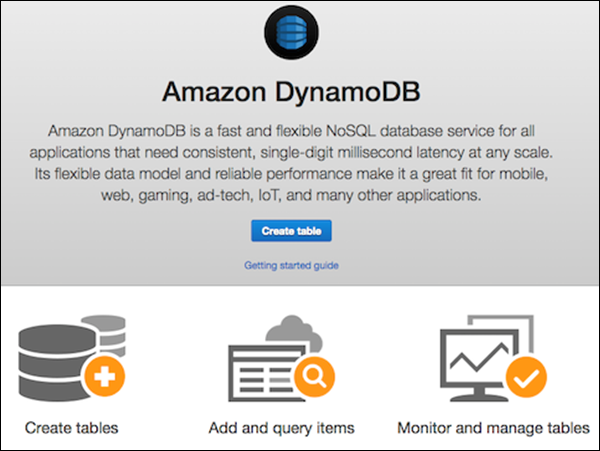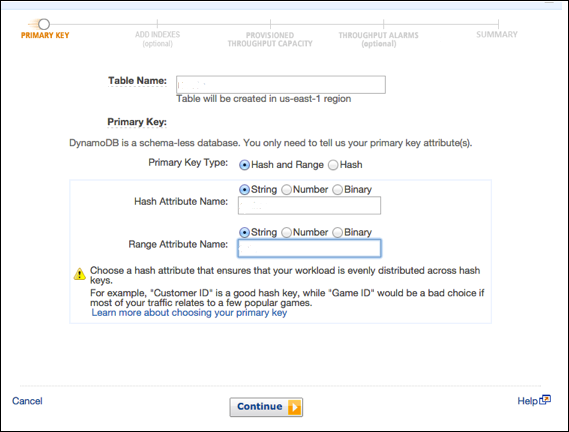dynamodb
Khóa học miễn phí DynamoDB – Create Table nhận dự án làm có lương
DynamoDB – Create Table
Creating a table generally consists of spawning the table, naming it, establishing its primary key attributes, and setting attribute data types.
Utilize the GUI Console, Java, or another option to perform these tasks.
Create Table using the GUI Console
Create a table by accessing the console at . Then choose the “Create Table” option.

Our example generates a table populated with product information, with products of unique attributes identified by an ID number (numeric attribute). In the Create Table screen, enter the table name within the table name field; enter the primary key (ID) within the partition key field; and enter “Number” for the data type.

After entering all information, select Create.
Create Table using Java
Use Java to create the same table. Its primary key consists of the following two attributes −
-
ID − Use a partition key, and the ScalarAttributeType N, meaning number.
-
Nomenclature − Use a sort key, and the ScalarAttributeType S, meaning string.
Java uses the createTable method to generate a table; and within the call, table name, primary key attributes, and attribute data types are specified.
You can review the following example −
import java.util.Arrays;
import com.amazonaws.services.dynamodbv2.AmazonDynamoDBClient;
import com.amazonaws.services.dynamodbv2.document.DynamoDB;
import com.amazonaws.services.dynamodbv2.document.Table;
import com.amazonaws.services.dynamodbv2.model.AttributeDefinition;
import com.amazonaws.services.dynamodbv2.model.KeySchemaElement;
import com.amazonaws.services.dynamodbv2.model.KeyType;
import com.amazonaws.services.dynamodbv2.model.ProvisionedThroughput;
import com.amazonaws.services.dynamodbv2.model.ScalarAttributeType;
public class ProductsCreateTable {
public static void main(String[] args) throws Exception {
AmazonDynamoDBClient client = new AmazonDynamoDBClient()
.withEndpoint("http://localhost:8000");
DynamoDB dynamoDB = new DynamoDB(client);
String tableName = "Products";
try {
System.out.println("Creating the table, wait...");
Table table = dynamoDB.createTable (tableName,
Arrays.asList (
new KeySchemaElement("ID", KeyType.HASH), // the partition key
// the sort key
new KeySchemaElement("Nomenclature", KeyType.RANGE)
),
Arrays.asList (
new AttributeDefinition("ID", ScalarAttributeType.N),
new AttributeDefinition("Nomenclature", ScalarAttributeType.S)
),
new ProvisionedThroughput(10L, 10L)
);
table.waitForActive();
System.out.println("Table created successfully. Status: " +
table.getDescription().getTableStatus());
} catch (Exception e) {
System.err.println("Cannot create the table: ");
System.err.println(e.getMessage());
}
}
}
In the above example, note the endpoint: .withEndpoint.
It indicates the use of a local install by using the localhost. Also, note the required ProvisionedThroughput parameter, which the local install ignores.
Khóa học lập trình tại Toidayhoc vừa học vừa làm dự án vừa nhận lương: Khóa học lập trình nhận lương tại trung tâm Toidayhoc
Notice: Trying to access array offset on value of type bool in /home/edua/htdocs/edu.toidayhoc.com/wp-content/themes/flatsome/flatsome/inc/shortcodes/share_follow.php on line 41
